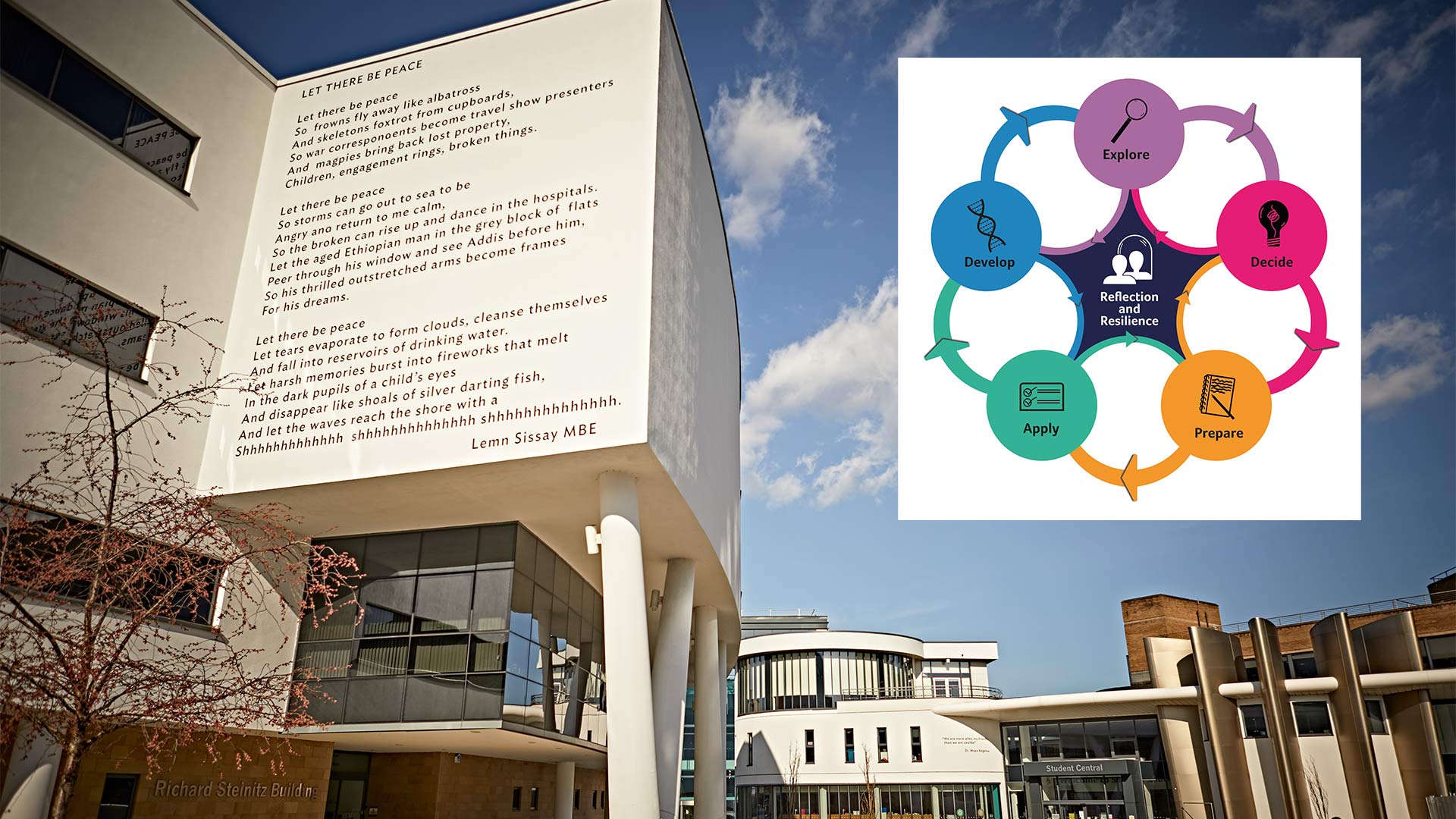Innovation in career planning at University via new model approach

The University’s work to innovate career planning for its students through a new model to boost outcomes is being recognised.
Its new Career Planning Model builds on the traditional career readiness questions but importantly is being embedded into professional practice at the University.
With its five key areas, the model is already being used to benefit students in their career planning as part of the University’s award-winning Global Professional Award – a ground-breaking employability and enterprise programme to which the majority of full-time undergraduates are automatically enrolled.
Careers education sessions have been created in which undergraduates engage with the model to identify where they are now and the appropriate next steps to take in planning their future careers.

The model itself is described as a step-by-step guide to make planning a career as straight forward as possible, taking students from Exploring at the start, to Developing a career at the end.
The process follows the clockwise direction of the large arrows, with smaller counter-clockwise arrows to indicate the possibility of feedback and revision at each stage.
In addition to the new Career Planning Model, the traditional student career readiness questions that students complete as part of the registration processes, have been adapted and the results are now available in real time to their current course leaders, giving access to course level data at the right time.
The team behind the new University of Huddersfield model are Deputy Head of Careers and Employability Dave Stanbury and Dr Bob Gilworth, Senior Lecturer in Careers Guidance within the School of Education, along with contributions from Claire Aydogan, Head of Careers and Employability and Abby Abbott, Digital Content and Engagement Co-ordinator within Student Services.
Dr Gilworth, who was instrumental in creating the careers registration approach in 2012, commented on the impetus for their innovation, saying: “We have access to the national Graduate Outcomes survey which is now 15 months after graduation. It means that universities don't get that data until close to two years after graduation.
“But if you think about what you're trying to do in terms of supporting your students with their careers and employability, what you could really do with is information about all of your current students who are here right now.
“So that's why we went about devising this process, which basically embeds capturing self-reported information about career thinking and the acquisition of work experience through the enrolment process.”

Dave Stanbury added that their new approach takes the original CRQ model that Dr Gilworth developed and following intensive consultation with a range of stakeholders within the University, evolves it into an intuitive process that students can use to power their own career development. He added: “We’re delighted with how well this has been received by staff and students.”
He said: “The model provides an intuitive route map for students to plan their career, so, we can use that to help students take that model and apply it to themselves. It also caters for a range of different theoretical understandings within the careers world as to how careers actually unfold.
“What we are now doing is then thinking how can we use that with students? It's up there on the website so students can use it for their own self-directed learning and we are providing a set of sector-leading self-help guides that address each of those particular aspects.
“We’re also thinking how we apply some of the insights to that institutional data set in a way that's practical and usable for the individual, for taking ownership of their own career learning.”
For the full article from Mr Stanbury and Dr Gilworth click here.